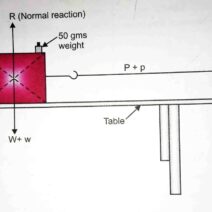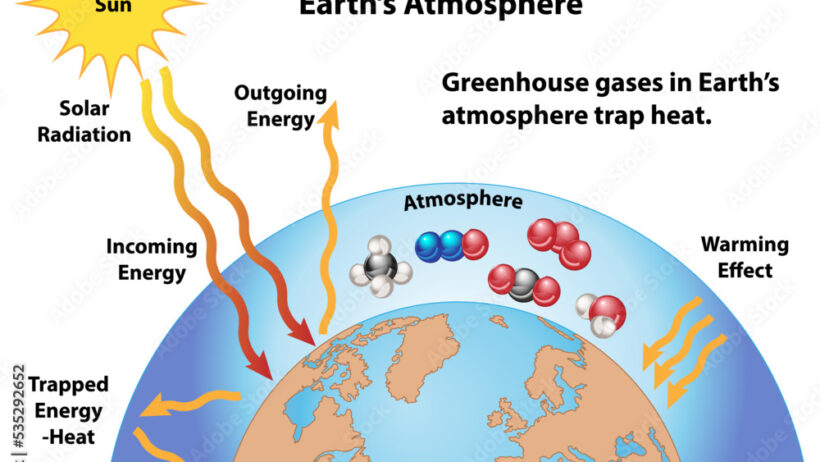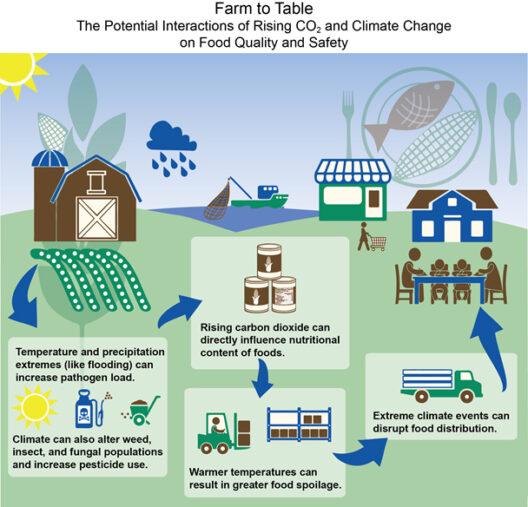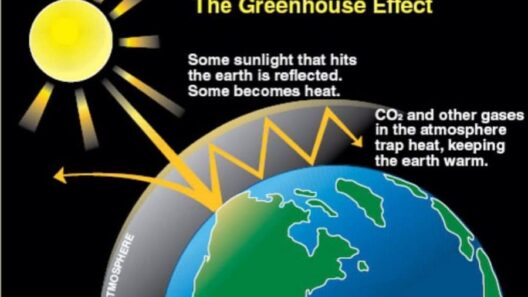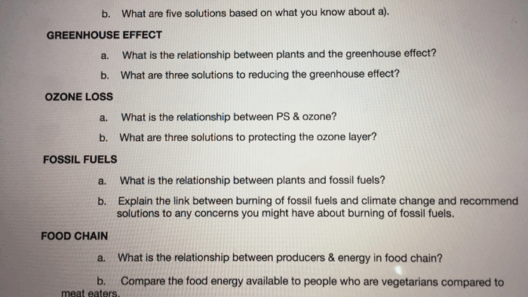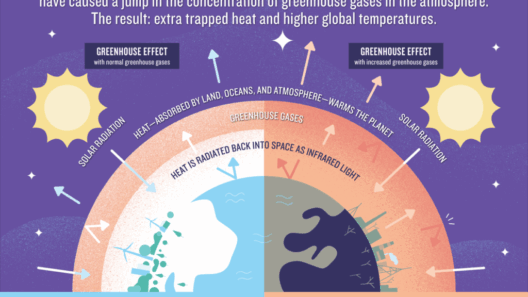The greenhouse effect represents a delicate balance within Earth’s climate system. It is a natural phenomenon that enables our planet to sustain life by trapping warmth in the atmosphere. However, human activities have exacerbated this effect, leading to unprecedented global warming and climate change. At the center of this critical issue is carbon dioxide (CO2), a gas that has garnered attention as a key player in altering the Earth’s temperature and weather patterns.
Understanding the greenhouse effect begins with recognizing the composition of Earth’s atmosphere. This gaseous layer surrounds our planet and is essential for filtering solar radiation and maintaining life-sustaining temperatures. Various gases contribute to the greenhouse effect, but carbon dioxide stands out due to its significant impact on climate change.
To discern the role of carbon dioxide in the greenhouse effect, it is imperative to discuss its origins and how it interplays with other greenhouse gases like methane (CH4) and nitrous oxide (N2O). Each gas possesses different properties, but when released in large quantities, they all enhance the greenhouse effect, trapping heat in the atmosphere.
The combustion of fossil fuels is the primary source of elevated carbon dioxide levels. When coal, oil, or natural gas is burned for energy, CO2 is released as a byproduct. Deforestation also contributes to rising CO2 levels, as trees that absorb this greenhouse gas are cut down or burned, further amplifying the carbon footprint. This raises a critical question: how does carbon dioxide specifically contribute to global warming?
Carbon dioxide’s role in global warming is rooted in its molecular structure, which allows it to absorb infrared radiation emitted from Earth’s surface. When sunlight penetrates the atmosphere, it is absorbed by the planet and re-radiated as heat. CO2 molecules capture this heat and retain it within the atmosphere, leading to an increase in global temperatures. This mechanism is essential for maintaining Earth’s energy balance, but excessive concentrations of CO2 skew this balance, creating a “blanket” effect first described by scientists in the nineteenth century.
The ramifications of increased carbon dioxide levels extend beyond rising temperatures. They manifest as dire climatic shifts, including altered precipitation patterns, more intense storms, and rising sea levels. These changes not only threaten ecosystems but also endanger human livelihoods, food security, and water resources. The agricultural sector, reliant on stable climatic conditions, faces challenges as changing weather patterns disrupt growing seasons and crop yields.
As the quest for solutions to combat climate change intensifies, it is vital to explore various strategies to mitigate carbon dioxide emissions. Transitioning from fossil fuel reliance to renewable energy sources—such as solar, wind, and hydroelectric power—represents a pivotal shift. These energy alternatives not only reduce carbon emissions but also foster sustainability, offering economic benefits through job creation in emerging green sectors.
Another avenue for addressing carbon dioxide levels is afforestation and reforestation initiatives. Planting trees not only sequesters carbon dioxide but also strengthens biodiversity and enhances ecosystem resilience. These efforts can capture CO2, counteracting emissions and contributing to community revitalization.
In addition to large-scale initiatives, individual actions play a crucial role in combating carbon emissions. From reducing energy consumption at home to supporting sustainable transportation options, every action counts. Climate-conscious choices can lead to a collective impact, driving demand for greener products and practices.
The science behind carbon dioxide and its influence on global warming is complex yet crucial in understanding climate dynamics. It constitutes a challenge that surpasses borders and political ideologies. As societies grapple with the implications of climate change, a global perspective is necessary for effective collaboration and action.
Public awareness and education about the greenhouse effect and carbon dioxide’s role are essential components in fostering proactive engagement on environmental issues. Educating communities about carbon footprints can instill a sense of responsibility and urgency to alter behaviors that contribute to CO2 emissions. As more individuals and organizations understand their impact, momentum for systemic change can be generated.
In conclusion, carbon dioxide is not merely a byproduct of modern civilization. It represents a formidable challenge that can distort natural processes and precipitate widespread environmental degradation. The interplay between carbon dioxide and the greenhouse effect elucidates the urgent need for collective action to mitigate global warming. Only through a myriad of strategies—sustainable development, public awareness, and individual responsibility—can society ensure a habitable planet for future generations.

